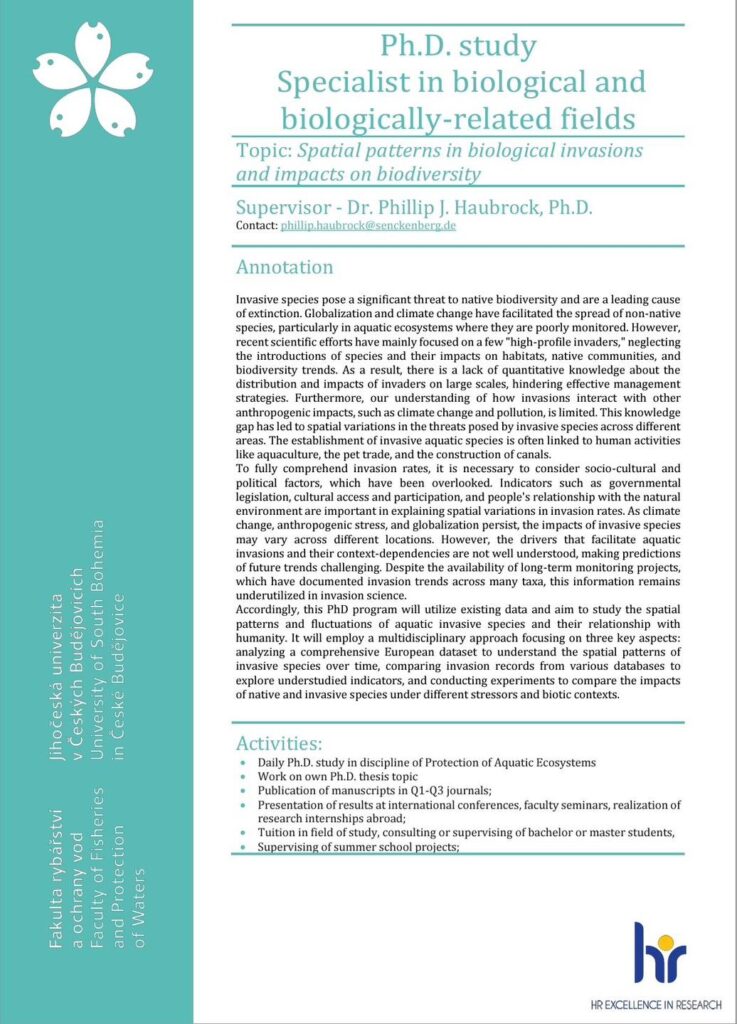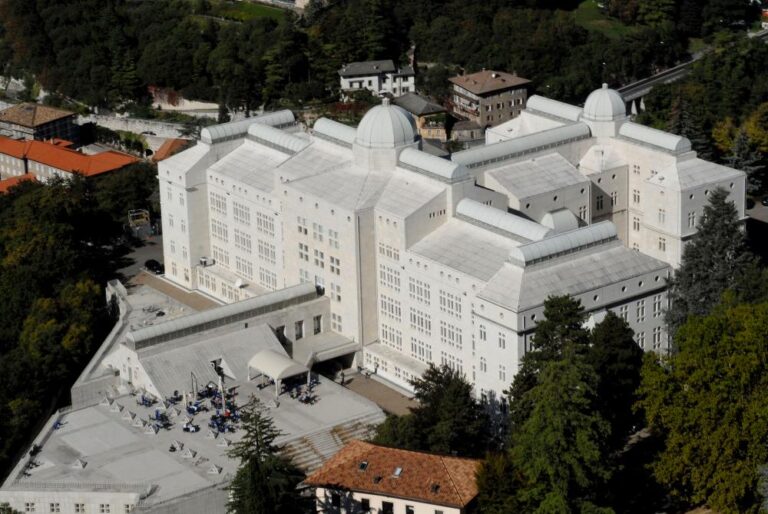Topic: Spatial patterns in biological invasions and impacts on biodiversity
Supervisor – Dr. Phillip J. Haubrock, Ph.D.
Contact: phillip.haubrock@senckenberg.de
Annotation
Invasive species pose a significant threat to native biodiversity and are a leading cause of extinction. Globalization and climate change have facilitated the spread of non-native species, particularly in aquatic ecosystems where they are poorly monitored. However, recent scientific efforts have mainly focused on a few “high-profile invaders,” neglecting the introductions of species and their impacts on habitats, native communities, and biodiversity trends. As a result, there is a lack of quantitative knowledge about the distribution and impacts of invaders on large scales, hindering effective management strategies. Furthermore, our understanding of how invasions interact with other anthropogenic impacts, such as climate change and pollution, is limited. This knowledge gap has led to spatial variations in the threats posed by invasive species across different areas. The establishment of invasive aquatic species is often linked to human activities like aquaculture, the pet trade, and the construction of canals.
To fully comprehend invasion rates, it is necessary to consider socio-cultural and political factors, which have been overlooked. Indicators such as governmental legislation, cultural access and participation, and people’s relationship with the natural environment are important in explaining spatial variations in invasion rates. As climate change, anthropogenic stress, and globalization persist, the impacts of invasive species may vary across different locations. However, the drivers that facilitate aquatic invasions and their context-dependencies are not well understood, making predictions of future trends challenging. Despite the availability of long-term monitoring projects, which have documented invasion trends across many taxa, this information remains underutilized in invasion science.
Accordingly, this PhD program will utilize existing data and aim to study the spatial patterns and fluctuations of aquatic invasive species and their relationship with humanity. It will employ a multidisciplinary approach focusing on three key aspects: analyzing a comprehensive European dataset to understand the spatial patterns of invasive species over time, comparing invasion records from various databases to explore understudied indicators, and conducting experiments to compare the impacts of native and invasive species under different stressors and biotic contexts.
Activities:
- Daily Ph.D. study in discipline of Protection of Aquatic Ecosystems
- Work on own Ph.D. thesis topic
- Publication of manuscripts in Q1-Q3 journals;
- Presentation of results at international conferences, faculty seminars, realization of research internships abroad;
- Tuition in field of study, consulting or supervising of bachelor or master students,
- Supervising of summer school projects;
*Following is the full advertisement image provided.





